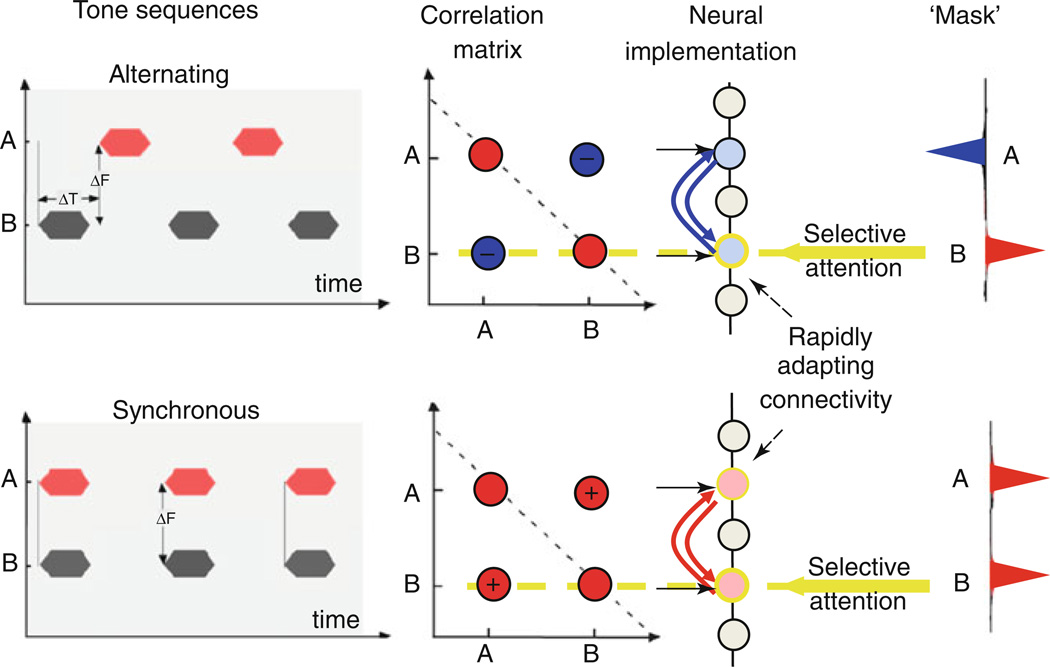Fig. 59.2.
Streaming of two-tone sequences. Alternating tone sequences are perceived as two streams when tones are far apart (large ΔF) and rates are relatively fast (small ΔT). Synchronous sequences are perceived as a single stream regardless of their frequency separation. The correlation matrices induced by these two sequences are different: pair-wise correlations between the two tones (A, B) are negative for the alternating sequence and positive for the synchronous tones. Neural implementation of this correlation computation can be accomplished by a layer of neurons that adapts rapidly to become mutually inhibited when responses are anti-correlated (alternating tones) and mutually excitatory when they are coherent (synchronous tones). When selective attention (yellow arrow) is directed to one tone (B in this example), the “row” of pair-wise correlations at B (along the yellow dashed line) can be used as a mask that indicates the channels that are correlated with the B stream. For the alternating sequence, tone A is negatively correlated with B, and hence, the mask is negative at A and eliminates this tone from the attended stream. In the synchronous case, the two tones are correlated, and hence, the mask groups both tones into the attended stream

